Instruction
The top-two mistakes by golfers over 50
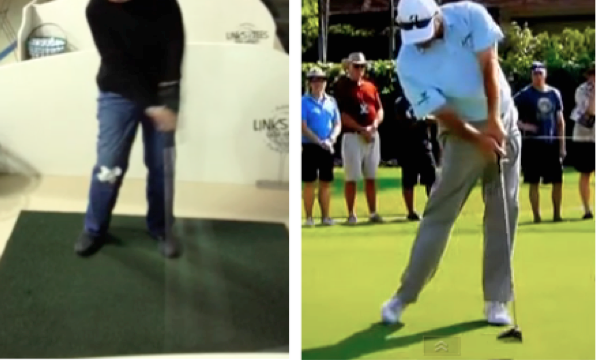
As golfers get older, the body tends to change, which causes several golf swing problems that we see over and over again. Most golfers older than 50 experience the same problems and it is likely that you may be struggling with these issues as well (although you may not realize it).
No. 1 Mistake: Lack of Weight Transfer into Impact
The No. 1 mistake that we find in golfers as they get older is a failure to transfer their weight forward enough through the impact zone of the golf swing.
Failure to transfer weight forward at impact leads to:
- Releasing the club too early.
- Ascending impact: loss of distance, spin and consistency.
The reason this is such a problem is that when your body and weight hang back, your swing will bottom out behind the ball. This will increase the odds that you will hit the ground before the ball, or blade the golf ball as your club face ascends through the impact position.
However, we see many golfers who have poor weight shift and still hit the ball flush. This is difficult to accomplish consistently, but even if you do consistently hit the ball with poor weight shift, you will be hitting the ball on the upswing. The effect this will have on your shots is that you will hit the ball higher, but with less distance and less spin. If you rarely take a divot with your irons, you may be striking the ball this way. Analyzing your weight shift is a good place to start looking.
How to Analyze Your Weight Shift
In our practice, we have our golfers stand on two separate scales or a force plate to determine weight shift. However, you can test yourself at home fairly easily by using either an impact bag or a duffle bag filled with towels.
To perform this drill, make your NORMAL golf swing at HALF SPEED (half speed is still pretty fast). Give the bag a good “pop,” and hold the position. In this position, you should feel 70 to 75 percent of your weight on your lead foot and you should be able to just barely lift your trail foot off of the ground for a split second.
How to Fix Your Weight Shift
I like to use the following drills/exercises to effectively train your body to aggressively shift your weight into the golf swing.
Drill No. 1: The Walkthrough Drill
[youtube id=”60aG-QgAKKA” width=”620″ height=”360″]
The key to performing this drill correctly, is to allow your trail leg to be pulled forward by your forward momentum instead of using your muscles to lift the leg forward. This is a sign of a good weight shift.
Exercise No. 1: Resisted Follow Through
The best way to train the body to learn the movement you want it to make is to resist that movement. Using this method, your body is forced to use the correct muscles and patterns to ingrain the movement into your golf swing.
[youtube id=”RtwKiV_V5Cs” width=”620″ height=”360″]
Purpose: Train the body to explosively transfer weight.
Setup: Begin by attaching your exercise band and anchor to a doorway at around belly button height. Wrap the band around you to the left around your belt line.
Golf Action: As if you were hitting a golf ball, take your normal backswing and follow through. Your follow through will be against resistance so turn strong, quickly and under control to a full finish.
Parameters: Perform one to three sets of eight repetitions.
No. 2 Mistake: Wrist Release is Much Too Early
The second mistake that we commonly see in golfers older than 50 is releasing the club too early in their downswing. This may be connected to poor weight shift but that is not always the case.
The biggest problems that you will face if you release the club too early in your downswing will be:
- You will reach peak acceleration well behind the ball and will be decelerating into the ball which results in poor contact and loss of distance.
- As in mistake No. 1, your swing will bottom out behind the ball.
How to Analyze Your Release
I like to use two different tests to measure your release.
1. Using the Impact Bag to Test Release
To perform this test, you will follow the same exact directions as the above test with the impact bag. However, when you hold the impact position, instead of analyzing your weight shift you are simply going to look and see if your lead wrist is flat or if it is bent.
The correct position is that your lead wrist is flat and your hands should be in front of the club face (your shaft should be leaning toward the target). If the shaft of your club is not tilted forward, this would indicate that you released the club too early.
2. The Swoosh Drill
This is one of my favorite drills for golfers older than 50 and senior golfers. To perform this drill you are going to use a mid-iron, turn it upside down, and use your normal golf grip on the bottom of the shaft of the club as shown below.
When you swing the club aggressively, you will hear a “swoosh” sound, but the key to this drill is WHERE you hear the swoosh sound. The swoosh sound will be the loudest at the point of maximum acceleration (usually where you release, or unhinge, your wrists).
The key to moving your “swoosh” sound forward is to keep your wrists hinged longer and releasing your wrist hinge as the hands pass the ball at the impact position. Performing this correctly will maximize your distance because you will reach your maximum acceleration as you hit through the ball.
If you are a golfer older than 50, take a quick moment and run through these tests. In my experience, golfers do not know that they are making these mistakes until they test for them. If you struggle with distance and/or consistency, these small changes will make a substantial difference in your golf game, help you hit shorter irons into greens, and score much better this summer.
- LIKE81
- LEGIT8
- WOW4
- LOL1
- IDHT1
- FLOP1
- OB1
- SHANK6
Instruction
Clement: Laid-off or perfect fade? Across-the-line or perfect draw?

Some call the image on the left laid off, but if you are hitting a fade, this could be a perfect backswing for it! Same for across the line for a draw! Stop racking your brain with perceived mistakes and simply match backswing to shot shape!
- LIKE0
- LEGIT0
- WOW0
- LOL0
- IDHT0
- FLOP0
- OB0
- SHANK1
Instruction
The Wedge Guy: The easiest-to-learn golf basic

My golf learning began with this simple fact – if you don’t have a fundamentally sound hold on the golf club, it is practically impossible for your body to execute a fundamentally sound golf swing. I’m still a big believer that the golf swing is much easier to execute if you begin with the proper hold on the club.
As you might imagine, I come into contact with hundreds of golfers of all skill levels. And it is very rare to see a good player with a bad hold on the golf club. There are some exceptions, for sure, but they are very few and very far between, and they typically have beat so many balls with their poor grip that they’ve found a way to work around it.
The reality of biophysics is that the body moves only in certain ways – and the particulars of the way you hold the golf club can totally prevent a sound swing motion that allows the club to release properly through the impact zone. The wonderful thing is that anyone can learn how to put a fundamentally sound hold on the golf club, and you can practice it anywhere your hands are not otherwise engaged, like watching TV or just sitting and relaxing.
Whether you prefer an overlap, interlock or full-finger (not baseball!) grip on the club, the same fundamentals apply. Here are the major grip faults I see most often, in the order of the frequency:
Mis-aligned hands
By this I mean that the palms of the two hands are not parallel to each other. Too many golfers have a weak left hand and strong right, or vice versa. The easiest way to learn how to hold the club with your palms aligned properly is to grip a plain wooden ruler or yardstick. It forces the hands to align properly and shows you how that feels. If you grip and re-grip a yardstick several times, then grip a club, you’ll see that the learning curve is almost immediate.
The position of the grip in the upper/left hand
I also observe many golfers who have the butt of the grip too far into the heel pad of the upper hand (the left hand for right-handed players). It’s amazing how much easier it is to release the club through the ball if even 1/4-1/2″ of the butt is beyond the left heel pad. Try this yourself to see what I mean. Swing the club freely with just your left hand and notice the difference in its release from when you hold it at the end of the grip, versus gripping down even a half inch.
To help you really understand how this works, go to the range and hit shots with your five-iron gripped down a full inch to make the club the same length as your seven-iron. You will probably see an amazing shot shape difference, and likely not see as much distance loss as you would expect.
Too much lower (right) hand on the club
It seems like almost all golfers of 8-10 handicap or higher have the club too far into the palm of the lower hand, because that feels “good” if you are trying to control the path of the clubhead to the ball. But the golf swing is not an effort to hit at the ball – it is a swing of the club. The proper hold on the club has the grip underneath the pad at the base of the fingers. This will likely feel “weak” to you — like you cannot control the club like that. EXACTLY. You should not be trying to control the club with your lower/master hand.
Gripping too tightly
Nearly all golfers hold the club too tightly, which tenses up the forearms and prevents a proper release of the club through impact. In order for the club to move back and through properly, you must feel that the club is controlled by the last three fingers of the upper hand, and the middle two fingers of the lower hand. If you engage your thumbs and forefingers in “holding” the club, the result will almost always be a grip that is too tight. Try this for yourself. Hold the club in your upper hand only, and squeeze firmly with just the last three fingers, with the forefinger and thumb off the club entirely. You have good control, but your forearms are not tense. Then begin to squeeze down with your thumb and forefinger and observe the tensing of the entire forearm. This is the way we are made, so the key to preventing tenseness in the arms is to hold the club very lightly with the “pinchers” — the thumbs and forefingers.
So, those are what I believe are the four fundamentals of a good grip. Anyone can learn them in their home or office very quickly. There is no easier way to improve your ball striking consistency and add distance than giving more attention to the way you hold the golf club.
More from the Wedge Guy
- The Wedge Guy: Golf mastery begins with your wedge game
- The Wedge Guy: Why golf is 20 times harder than brain surgery
- The Wedge Guy: Musings on the golf ball rollback
- LIKE86
- LEGIT13
- WOW6
- LOL1
- IDHT0
- FLOP4
- OB1
- SHANK8
Instruction
Clement: Stop ripping off your swing with this drill!

Not the dreaded headcover under the armpit drill! As if your body is defective and can’t function by itself! Have you seen how incredible the human machine is with all the incredible feats of agility all kinds of athletes are accomplishing? You think your body is so defective (the good Lord is laughing his head off at you) that it needs a headcover tucked under the armpit so you can swing like T-Rex?
- LIKE0
- LEGIT2
- WOW2
- LOL0
- IDHT0
- FLOP0
- OB0
- SHANK2
-

 19th Hole2 weeks ago
19th Hole2 weeks agoDave Portnoy places monstrous outright bet for the 2024 Masters
-

 19th Hole3 days ago
19th Hole3 days agoJustin Thomas on the equipment choice of Scottie Scheffler that he thinks is ‘weird’
-

 19th Hole2 weeks ago
19th Hole2 weeks agoTiger Woods arrives at 2024 Masters equipped with a putter that may surprise you
-

 19th Hole3 days ago
19th Hole3 days ago‘Absolutely crazy’ – Major champ lays into Patrick Cantlay over his decision on final hole of RBC Heritage
-

 19th Hole2 weeks ago
19th Hole2 weeks agoTwo star names reportedly blanked Jon Rahm all week at the Masters
-

 19th Hole1 week ago
19th Hole1 week agoReport: LIV Golf identifies latest star name they hope to sign to breakaway tour
-

 19th Hole1 week ago
19th Hole1 week agoNeal Shipley presser ends in awkward fashion after reporter claims Tiger handed him note on 8th fairway
-

 19th Hole1 week ago
19th Hole1 week agoBrandel Chamblee has ‘no doubt’ who started the McIlroy/LIV rumor and why


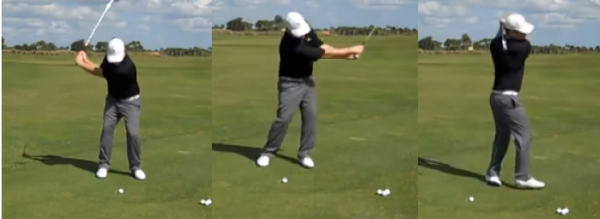
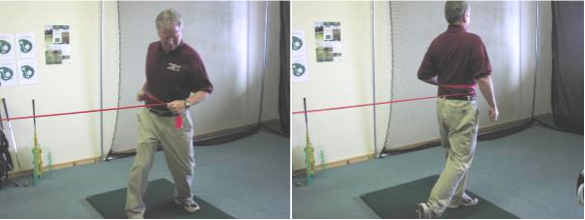
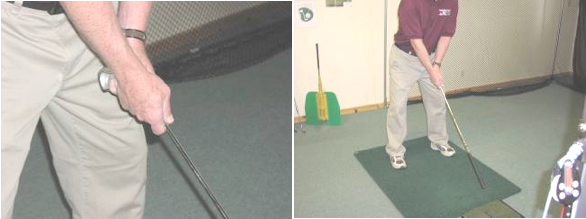
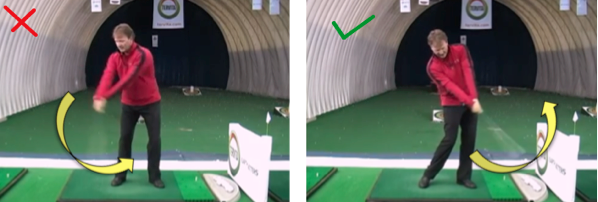















Gerry
May 26, 2017 at 7:40 am
The abstract below pretty much speaks for itself . Older individuals generally have weaker foot muscles and this may cause reduced postural stability . In my view this would lead to poorer quality of shot particularly with longer clubs .
ABSTRACT
Foot muscle morphology is related to centre of pressure sway and control mechanisms during single-leg standing
Xianyi Zhang
‘Correspondence information about the author Xianyi Zhang
Email the author Xianyi ZhangEmail the author Xianyi Zhang, Kurt Heinrich Schütte
Benedicte Vanwanseele
OI: http://dx.doi.org/10.1016/j.gaitpost.2017.05.027
showArticle Info
Abstract
Highlights
•Larger abductor halluces(A MUSCLE IN THE FOOT) is related to smaller COP (CENTRE OF PRESSURE) sway.
•Abductor hallucis affects open-loop and closed-loop control mechanisms.
•Larger peroneus muscles are related to larger COP sway.
•Training intrinsic foot muscles may benefit balance.
Abstract
Maintaining balance is vitally important in everyday life. Investigating the effects of individual foot muscle morphology on balance may provide insights into neuromuscular balance control mechanisms. This study aimed to examine the correlation between the morphology of foot muscles and balance performance during single-leg standing. Twenty-eight recreational runners were recruited in this study. An ultrasound device was used to measure the thickness and cross-sectional area of three intrinsic foot muscles (abductor hallucis, flexor digitorum brevis and quadratus plantae) and peroneus muscles. Participants were required to perform 30?seconds of single-leg standing for three trials on a force plate, which was used to record the center of pressure (COP). The standard deviation of the amplitude and ellipse area of the COP were calculated. In addition, stabilogram diffusion analysis (SDA) was performed on COP data. Pearson correlation coefficients were computed to examine the correlation between foot muscle morphology and traditional COP parameters as well as with SDA parameters. Our results showed that larger abductor hallucis correlated to smaller COP sway, while larger peroneus muscles correlated to larger COP sway during single-leg standing. Larger abductor hallucis also benefited open-loop dynamic stability, as well as supported a more efficient transfer from open-loop to closed loop control mechanisms. These results suggest that the morphology of foot muscles plays an important role in balance performance, and that strengthening the intrinsic foot muscles may be an effective way to improve balance.
uscles and so reduced ability to control postural stability .
Gerry
Sep 18, 2016 at 5:33 am
Hi Ryan
Below is a link to some trial generated information on toe flexor strength and some associated possibilities .
link
Toe training may help keep elderly upright | Victoria University …
https://www.vu.edu.au/news…/toe-training-may-help-keep-elderly-uprig…
9 Aug 2016 – Victoria University researchers are investigating if toe and foot exercises can help reduce falling.
Gerry
May 14, 2016 at 4:54 am
Hi Ryan
With regard to my previous post might it be the reduction in intrinsic foot muscle strength ,which accompanies aging and some age related medical conditions, which is at the root of detrimental swing changes .
For example a reduction in foot muscle strength has been shown to reduce dynamic balance in a two foot stance .
It makes sense to me that if the body is less able to control weight shift a subconscious effort might be made to reduce the magnitude of such shifts .
I would greatly appreciate any comments on the above .
Gerry
Gerry
May 5, 2016 at 5:20 am
Hi Ryan
How big a role do you think the intrinsic muscles of the feet play in producing a consistent golf swing ?
The reason I ask is that research has shown that toe flexor strength falls away by up to 30% in older individuals but also that this can be reversed .
Gerry
Pingback: Live Happier | Five Reasons Why Golf is Good Exercise for Over 50s
Pingback: Most Common Mistake in the Follow Through - Begin Better Golf
Alan
Oct 22, 2014 at 2:31 pm
Good drills. There is another that helped me with early wrist release.
It is a chip, pitch, punch routine. Start off chipping the ball with it 8 inches in front of the front foot, do 10 of these then switch to the pitch, a swing to knee height with the ball in the same front position. Ten of these. From there go to the punch shot at waist height with the ball similarly placed, do 10 of these. Go back to the beginning and repeat. If these are done every day for at least three Weeks the early wrist release will disappear. It will help the lag factor in the swing also.
charles brown
Aug 22, 2014 at 6:14 pm
I can hardly wait to practice the weight-shift drills so as to impress Wie and Gulbis in the next golf pro-am soon.